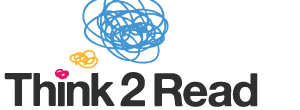Cooperative Learning.p65 – Indiana University
Safe and Responsive Schools, Indiana University (no date)
Cooperative learning has received increased attention in recent yearsdue to the movement to educate students with disabilities in the least restrictiveenvironment. Children with disabilities bring social needs, as well as academicneeds, which are not easily met in the regular classroom. The use of classroomcooperative learning peer groups with cooperative goal structures is a promisingalternative to better serve students with disabilities in the least restrictiveenvironment. In addition, it may also serve as a vehicle for improving theoverall social and academic climate for a school. As a result, it might also beconsidered to be an intervention of use in promoting appropriate behavior ofstudents in school, and in creating a positive behavioral climate in a school, thuspreventing violence.
Overview: What is Cooperative Learning?
Cooperative learning has been defined as “small groups of learnersworking together as a team to solve a problem, complete a task, or accomplish acommon goal” (Artz & Newman, 1990, p. 448). The cooperative learningmodel requires student cooperation and interdependence in its task, goal, andreward structures. The idea is that lessons are created in such a way thatstudents must cooperate in order to achieve their learning objectives.Although the basic principles of cooperative learning do not change,there are several variations of the model. The leading developers of cooperativelearning include Robert Slavin, Roger and David Johnson, and Spencer Kagan,all of whom have slightly different approaches and emphases (Metzke &Berghoff, 1999). Johnson and Johnson (1975) focus on developing a specificstructure that can be incorporated with a variety of curriculums, with anemphasis on integrating social skills with academic tasks. Kagan’s workfocuses on the use of many different structures to help facilitate active learning,team building, and group skills. Slavin’s work utilizes methods from bothJohnson and Johnson and Kagan, and has resulted in the development ofspecific cooperative learning structures.Several approaches to cooperative learning include Circles of Learning(Johnson, Johnson, Holubec & Roy, 1984), Student Teams AchievementDivisions (STAD), Jigsaw, Group Investigation, and the Structural Approach(Arends, 1997). These are all specific models teachers can use to set upcooperative learning groups and to structure lessons.
